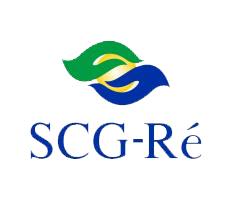Reinsurance Fraud: Identifying and Combating Deception in the Risk Transfer Labyrinth
Reinsurance, the bedrock of risk mitigation, stands guard against uncertainty for insurers and their policyholders. Yet, nestled within its complex layers, lurks a shadow – reinsurance fraud. This article delves into the deceptive schemes employed, unveils methods for their detection, and showcases industry initiatives safeguarding this crucial financial mechanism.
Unmasking the Fraudsters’ Playbook:
- Misrepresentation of Risk: Inflating insured values, concealing pre-existing conditions, or manipulating actuarial data – fraudsters paint a rosy picture of risk to secure favorable reinsurance coverage at lower premiums.
- Fictitious Claims: Concocting bogus accidents, exaggerating losses, or staging catastrophes – these schemes aim to siphon off unearned payouts from reinsurers.
- Reinsurance Ceding Collusion: Collusion between the ceding insurer and reinsurer can involve inflating reserves, manipulating claims data, or creating fictitious reinsurance contracts to deceive regulators and stakeholders.
- Treaty Manipulation: Exploiting loopholes in reinsurance treaties, miscalculating reserves, or engaging in side agreements – these schemes aim to unfairly shift financial burdens onto unsuspecting reinsurers.
Shining a Light on the Deception:
- Data Analytics: Advanced data mining techniques can scrutinize claims patterns, identify inconsistencies, and uncover anomalous relationships potentially indicative of fraud.
- Claims Investigations: Thorough investigations by specialized units, including site visits, forensic analysis, and witness interviews, can expose falsified documents, staged events, and fraudulent claims.
- Reinsurance Information Sharing: Collaborative platforms where insurers and reinsurers share information on suspicious activities and identified fraudsters can foster early detection and collective action.
- Internal Controls: Rigorous internal controls, including robust underwriting procedures, due diligence checks, and regular audits, can deter fraudulent activity at the outset.
Building a Wall of Defense:
- Industry Initiatives: Organizations like the Coalition Against Insurance Fraud (CAIF) and the International Union of Reinsurers (IUR) are leading the charge with educational programs, fraud alert systems, and collaborative investigations.
- Regulatory Collaboration: Stronger regulatory frameworks with international cooperation can enhance information sharing, harmonize anti-fraud measures, and deter cross-border fraudulent activity.
- Technology Advancements: Artificial intelligence and machine learning are finding promising applications in identifying suspicious patterns, predicting fraud risks, and automating compliance processes.
Conclusion:
Reinsurance fraud threatens the stability and sustainability of the risk mitigation ecosystem. But by staying vigilant, employing robust detection methods, and fostering industry-wide collaboration, we can ensure that reinsurance remains a beacon of security in the face of deception. Remember, the fight against fraud is a continuous one, and by constantly adapting and innovating, we can safeguard the integrity of this vital financial mechanism for generations to come.













